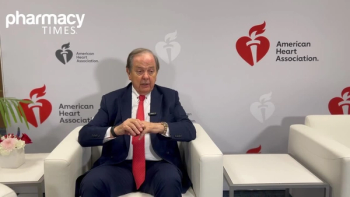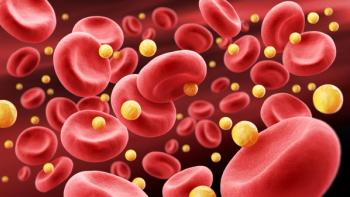
Nonpharmaceutical Interventions Can Disrupt Dynamics of Pneumococcal Disease
Key Takeaways
- Non-pharmaceutical interventions during COVID-19 reduced IPD incidence, with a rebound post-relaxation, highlighting the importance of vaccination programs.
- The study found low pneumococcal colonization in SARS-CoV-2 coinfected patients, with severe COVID-19 potentially enhancing pneumococcal disease severity.
The implementation of nonpharmaceutical measures during the COVID-19 pandemic reduced transmission of Streptococcus pneumoniae, a key bacterium that causes pneumococcal disease.
During the COVID-19 pandemic, nonpharmaceutical interventions—including lockdowns, social distancing, and enhanced hygiene practices—led to a reduced incidence of invasive pneumococcal disease (IPD) caused by Streptococcus pneumoniae, though a rebound was observed following the relaxation of such measures. Accordingly, in patients coinfected with SARS-CoV-2 during the pandemic, investigators observed a low prevalence of pneumococcal colonization.1
The data, published in Frontiers in Cellular and Infection Microbiology, add to the litany of research indicating significant epidemiological changes to respiratory virus transmission patterns during the COVID-19 pandemic. IPD was not immune to such changes, with the investigators attributing the sharp decline in cases to the implementation of NPIs and the reduced circulation of respiratory viruses, such as respiratory syncytial virus (RSV) and influenza. The rebound observed by the investigators was a signal that effective vaccination programs remain essential to preventing and managing IPD.1
Did Pneumococcal Disease Rates Fluctuate During the COVID-19 Pandemic?
Associations between bacterial pathogens and respiratory viruses have been thoroughly investigated regarding co-infection risk. Investigators observe that viral infections precede pneumococcal infections, which can promote pneumococcal colonization and alter lung physiology. For example, research shows that the influenza virus can facilitate the adherence, replication, and dissemination of pneumococcal bacteria, negatively impacting clinical outcomes. Until this study, data on the relationship between SARS-CoV-2 and Streptococcus pneumoniae—especially in the context of the COVID-19 pandemic—have been lacking.1,2
Ongoing surveillance in these contexts is critical to better understanding the potential relationship between COVID-19 and IPD for both managing coinfections as they appear and predicting future transmission patterns. Therefore, the authors employed multiple approaches across an observational study of adults across the pandemic period: They first conducted a laboratory-based analysis of IPD trends; next, they initiated a retrospective analysis of COVID-19 clinical cases with pneumococcal isolates; and lastly, they conducted a retrospective analysis assessing pneumococcal colonization in SARS-CoV-2–positive samples.1
IPD Rates Decreased During Pandemic, But Coinfection Is Possible With Severe COVID-19
They first investigated IPD trends from January 2019 to December 2023. In total, 355 IPD episodes were recorded, of which 150 occurred in patients aged 18 to 64 years and 205 were in those older than 64 years of age. Seasonal IPD fluctuation was interrupted during the pandemic, with a significant decrease in IPD episodes (105 episodes in 2019 to 44 in 2020 and 31 in 2021). However, in subsequent winter seasons, there was a limited recovery in IPD numbers, rising to 65 episodes in the 2022 and 2023 winter season. Resilient serotypes included serotypes 3 and 8 throughout the pandemic period. Overall, serotype distribution was stable across the pandemic.1
Next, the authors characterized pneumococcal strains from COVID-19 patients. During the pandemic period, 66 COVID-19 patients in the study were admitted to the hospital and harbored concomitant pneumococcal infection; 14 episodes of IPD were considered IPD. The most reported serotypes were 3, 11A, 6C, 23A, and 19F. Interestingly, despite the low number of IPD episodes reported per year, there were meaningful changes in the prevalence of certain serotypes coinfecting patients with SARS-CoV-2.1
Lastly, the researchers examined the rate of pneumococcal colonization in patients with COVID-19. The authors gathered a total of 461 nasopharyngeal swabs from patients with SARS-CoV-2 infection who either attended primary care centers (n = 133) or were admitted to the hospital (n = 328). Pneumococcal colonization was only detected in 13 patients (2.8%), 10 of whom presented just mild COVID-19 symptoms. Colonization rates were similar across patient settings (primary care, 2.3%; hospital, 3.0%). Notably, colonization was more common in patients with severe COVID-19 (4.7%) compared with mild disease (2.5%; 95% CI, 0.13-3.05; P = .404).1
The observations garnered by these investigators shed light on the relationship between SARS-CoV-2 and pneumococcal disease, reinforcing the protective role of vaccinations. Despite the low impact of mild SARS-CoV-2 on pneumococcal colonization, the authors found that severe SARS-CoV-2 infection could enhance the severity of pneumococcal disease if coinfected. Pharmacists are essential in counseling patients on their risk of coinfection and offering them pneumococcal vaccines, if eligible, to protect them from IPD.1
“Continued surveillance of pneumococcal serotypes, colonization dynamics, and emerging lineages remains critical to inform prevention strategies,” the study authors wrote in their conclusion. “Further prospective and multicenter studies including other respiratory viruses are needed to provide a broader perspective on the interplay between viral and bacterial infections in the post-pandemic context, especially in adult populations.”1
REFERENCES
1. Calvo-Silveria S, Fernández-Delgado L, González-Diaz A, et al. SARS-CoV-2 and Streptococcus pneumoniae colonization and disease: an observational study in adults. Front Cell Infect Microbiol. 2025;15:1624521. doi.org/10.3389/fcimb.2025.1624521
2. Kim PE, Musher DM, Glezen WP, et al. Association of invasive pneumococcal disease with season, atmospheric conditions, air pollution, and the isolation of respiratory viruses. Clin Infect Dis. 1996;22(1):100-106. doi:10.1093/clinids/22.1.100
Newsletter
Stay informed on drug updates, treatment guidelines, and pharmacy practice trends—subscribe to Pharmacy Times for weekly clinical insights.
























































































































































































































